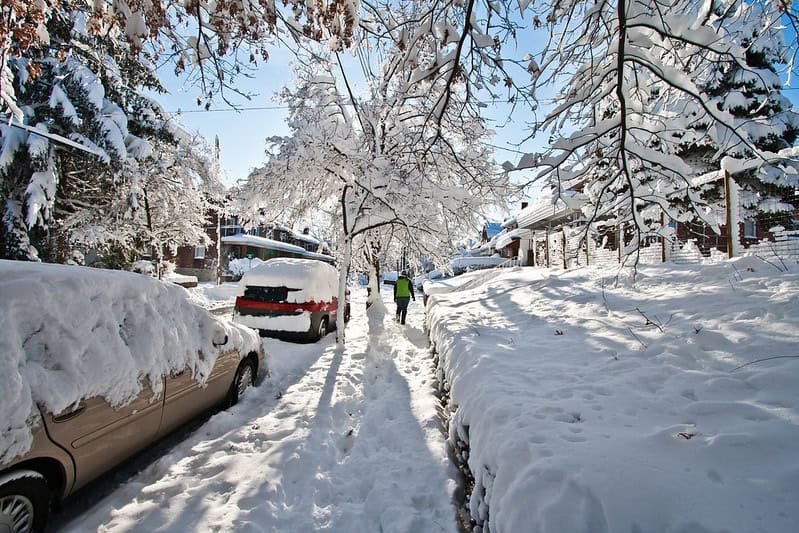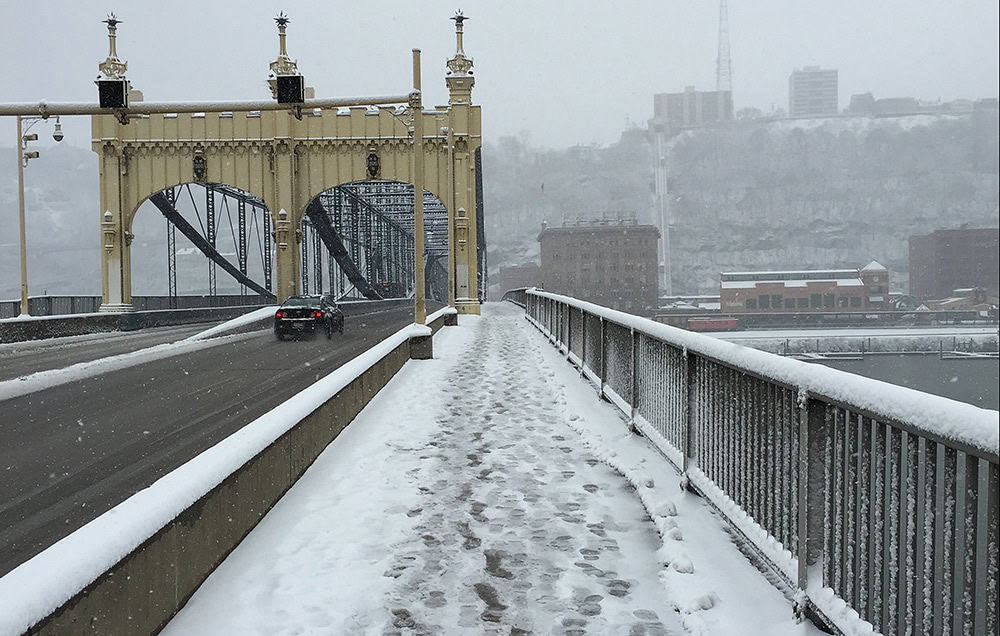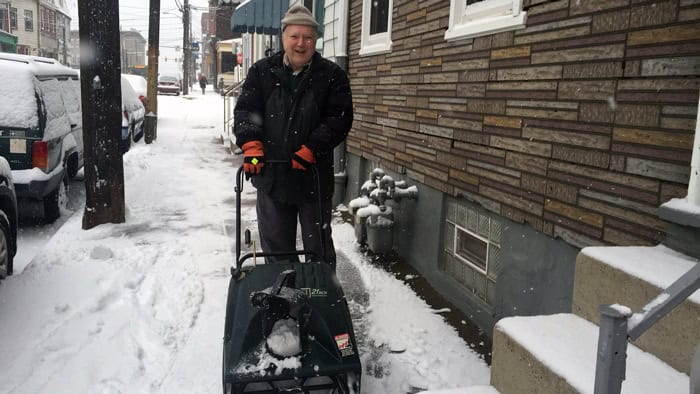
Safe sidewalks are essential
Hopefully, not many of you need convincing that sidewalks are absolutely essential to our communities and our quality of life. Most trips in and around Pittsburgh start and end on sidewalks. They’re so much more than just a conveyance for getting from point A to point B; they’re a way for people to explore our neighborhoods, to get exercise, and to stop and interact with their neighbors.
But, for as vital as sidewalks are, there is no coordinated city effort to maintain them, unlike our streets. As a result, tree roots have made many uneven, time has reduced many to rubble, and in the winter many are not cared for. And this state of disrepair leaves many of our sidewalks dangerous to use, and our most vulnerable neighbors more isolated.

However, enforcement can often do more harm than good
Homeowners, landlords, and businesses are responsible for clearing the snow and ice from sidewalks adjacent to their property within 24 hours of a snow event.
Pittsburgh City Code 419.03:
EVERY TENANT, OCCUPANT, OR PROPERTY OWNER HAVING THE CARE OR CHARGE OF ANY LAND OR BUILDING FRONTING ON ANY STREET IN THE CITY, WHERE THERE IS A SIDEWALK…WITHIN 24HRS AFTER THE FALL OF ANY SNOW OR SLEET, OR THE ACCUMULATION OF ICE CAUSED BY FREEZING RAINFALL, CAUSE THE SAME TO BE REMOVED FROM THE SIDEWALK
Those who do not comply with the city code can face fines, which particularly weighs on those who are poor, disabled, or otherwise marginalized. For those who are physically unable to shovel the sidewalk, for single parents whose children are too small to leave unattended, for people who work multiple jobs and find the time to clear their sidewalk hard to come by, those citations and fines can stack up.
This disproportionately affects people who can’t pay them, rather than slapping their wrists hard enough to get them to comply next time around. And as Our Streets Minneapolis found, those in poorer neighborhoods were more likely to be cited and fined.
Furthermore, if the fines are only stacking up, the sidewalks still aren’t getting cleared. It doesn’t solve the problem.

What We Do & What other Cities are doing
Pittsburgh snow management has existed in some form or another since the mid-1800s. Snow plows evolved from Snow Rollers (really, see this one here) which worked to literally roll the snow, or compact it so that horses and ski-mounted carts could get around in winter and business could continue as usual. Following the Blizzard of 1888, cities started to look to a systemization of snow removal — increasing the number of plows they owned and sectioning cities into manageable parcels. But it wasn’t until the invention of cars and their increasing popularity starting in the 1920s that drivers really demanded the streets be completely cleared of snow.
According to the City of Pittsburgh’s snow management website, the goal of the snow and ice control program, “is to keep vehicular traffic moving on Pittsburgh’s over 1,200 miles of streets during and following snowstorms.”
But what about pedestrians, who may depend on walking or public transportation to get to their job, school, or the grocery store? They too, need to have access to clear sidewalks.
Streetsblog sums it up perfectly in their article More Cities Are Taking Responsibility for Clearing Sidewalks of Snow.
It’s one of the more remarkable double-standards — or inequities — in transportation: Clearing streets of snow is a non-negotiable priority for public agencies, but safe routes for pedestrians are left to a piecemeal private system that mostly fails.
Angie Schmitt, “More Cities Are Taking Responsibility for Clearing Sidewalks of Snow” for Streetsblog, Feb 2019
On some level, it does make sense. Cars are infinitely more dangerous than pedestrians when they lose control on a patch of ice — both for the person driving and the people and property surrounding them. But that doesn’t change the fact that 25% of Pittsburgh households do not have access to a car and 11% commute by foot.
Cities across America have been experimenting with beginning to take on the responsibility of clearing sidewalks themselves. Both Burlington, VT and Rochester, NY shovel all their city sidewalks (though Rochester waits until there’s accumulation of at least 4”). As with many great ideas, cost and logistics present a barrier. Minneapolis Public Works estimated that a year of sidewalk shoveling could cost as much as $20 million per year.

Be a snow angel for your neighbors
The City of Pittsburgh does host the Snow Angels program, pairing up neighbors who can’t shovel their sidewalk with able-bodied volunteers in order to get the sidewalks cleared. This is a wonderful program, when people sign up and get paired. But I’d still like to see how we can expand it beyond just the elderly. What about the vacant lots? Or the family with both a newborn and a toddler and a parent who works two jobs?
Who in your neighborhood can you help?
Remember when you leave the house, every trip you go on, starts and ends as a pedestrian. Let’s think about how we can shovel our sidewalks, park our cars not on the sidewalk, move our garbage bins out of the way, and make space for our neighbors to safely get by. Let’s make Pittsburgh a better place to walk, roll, & bike!